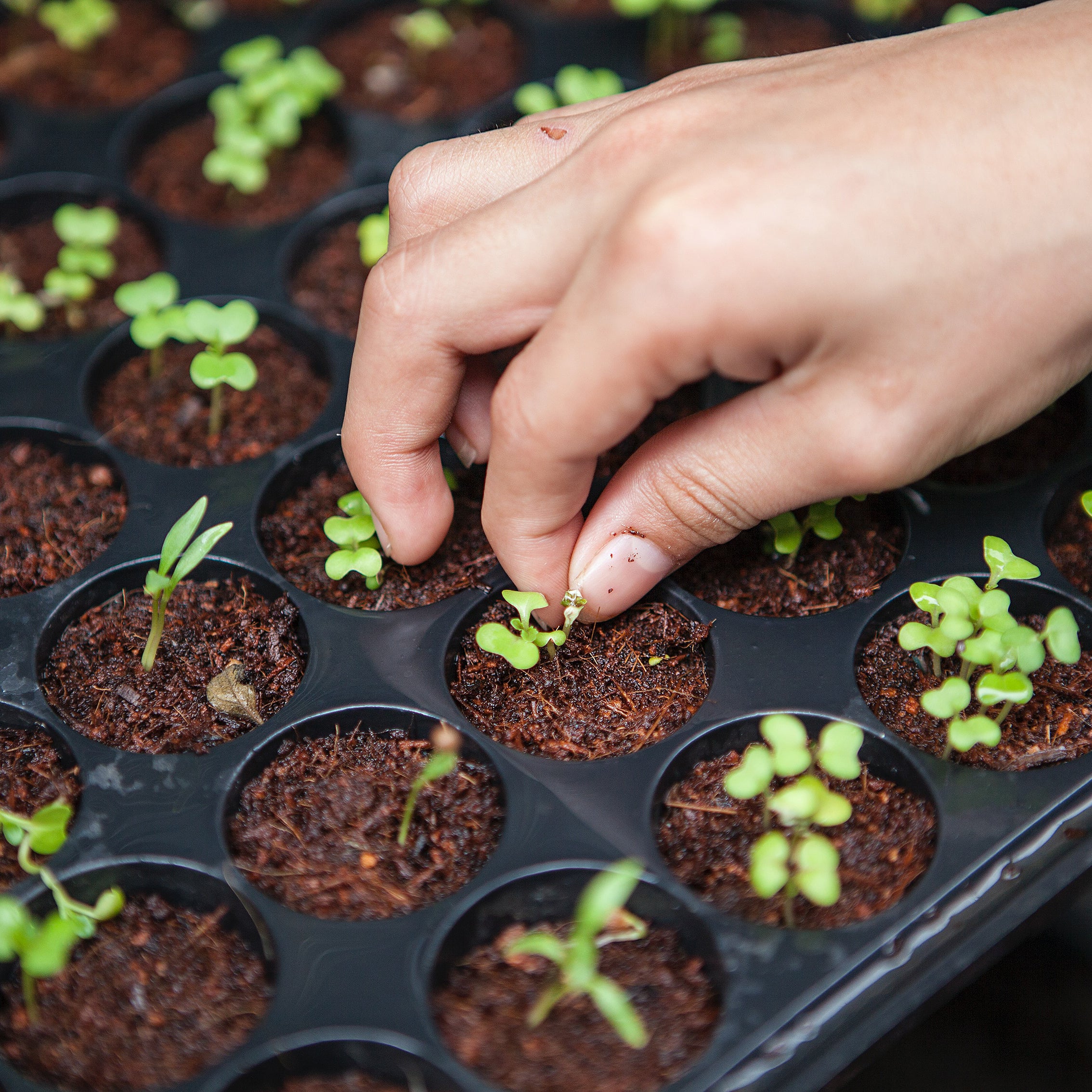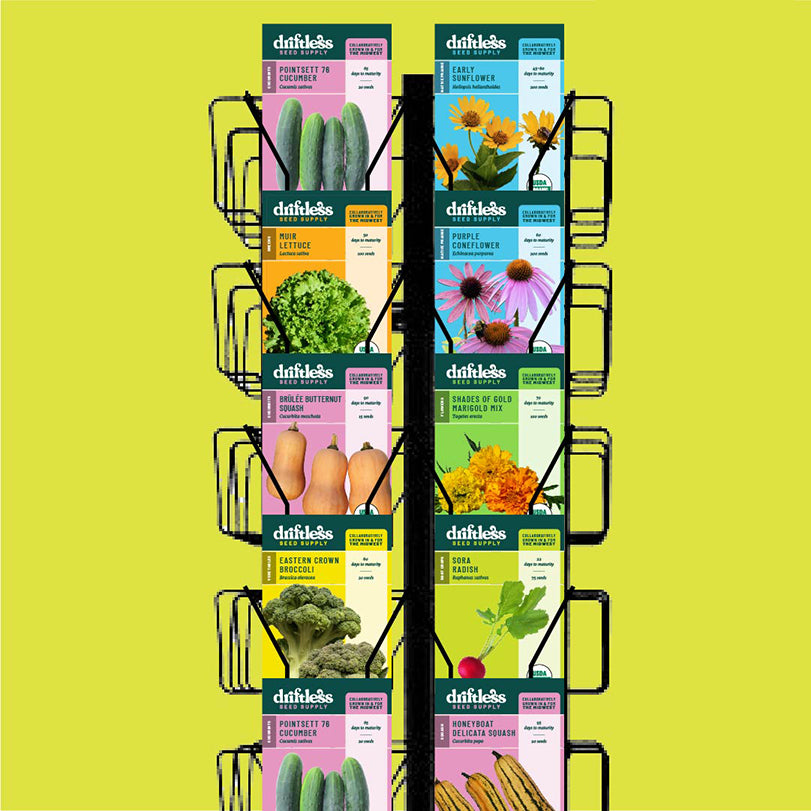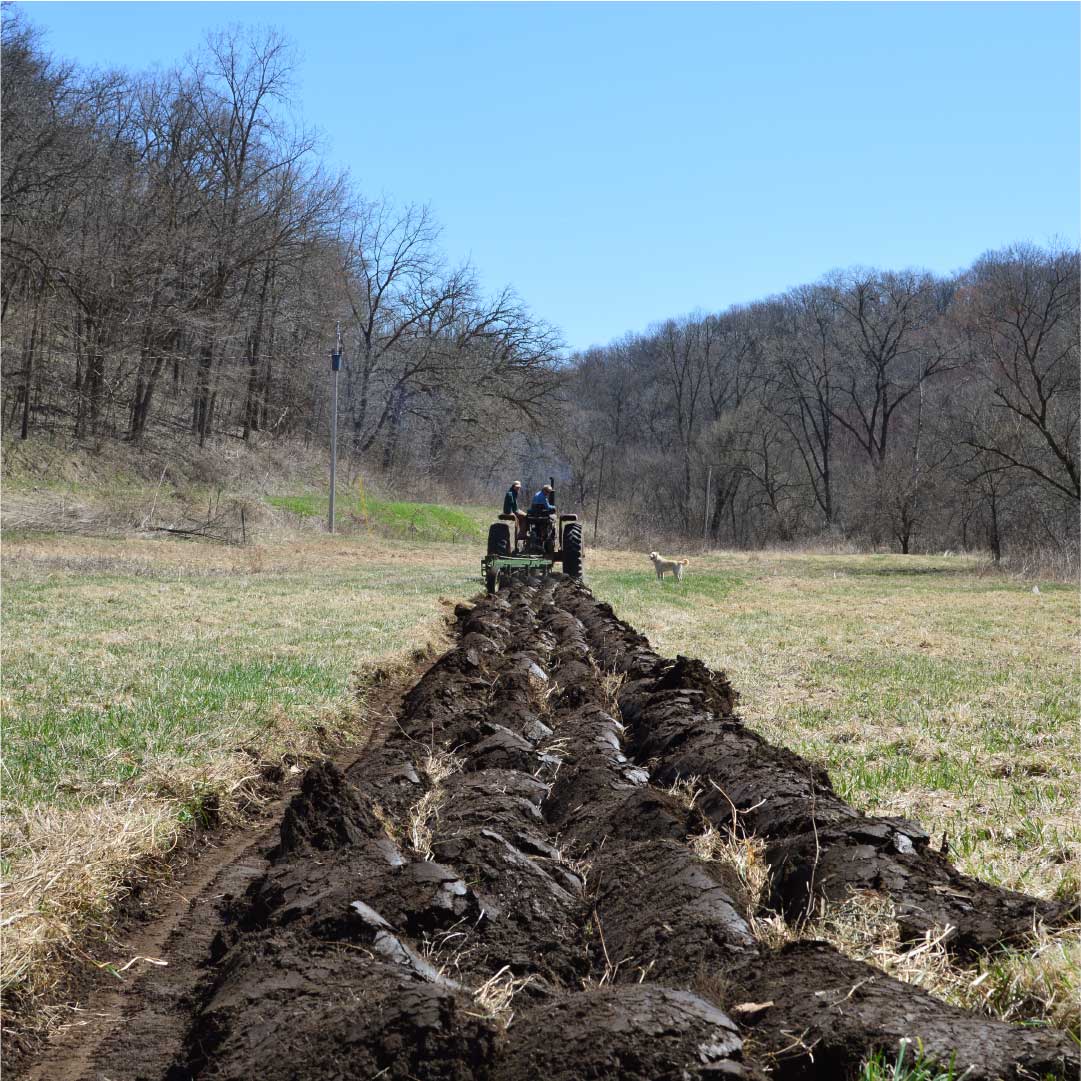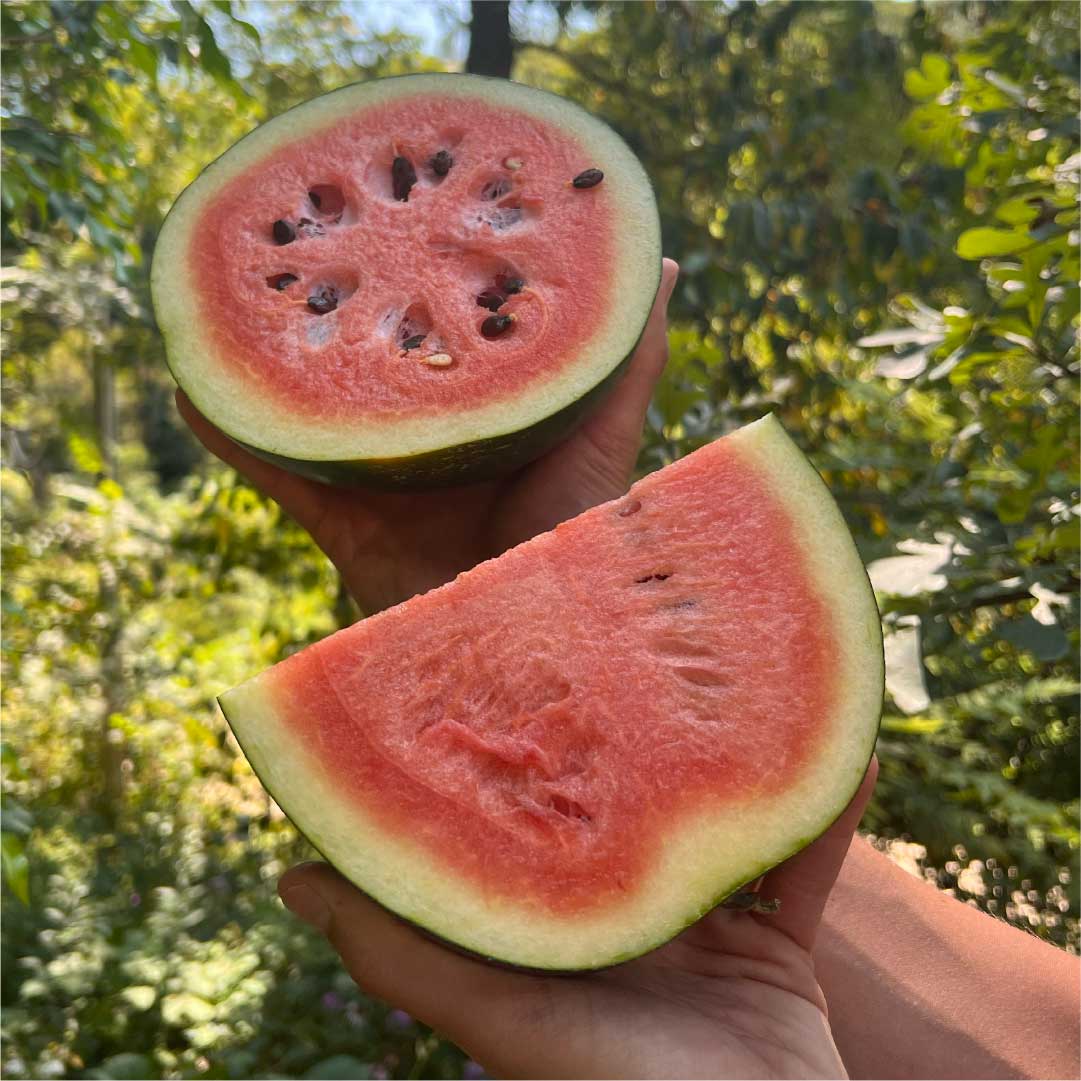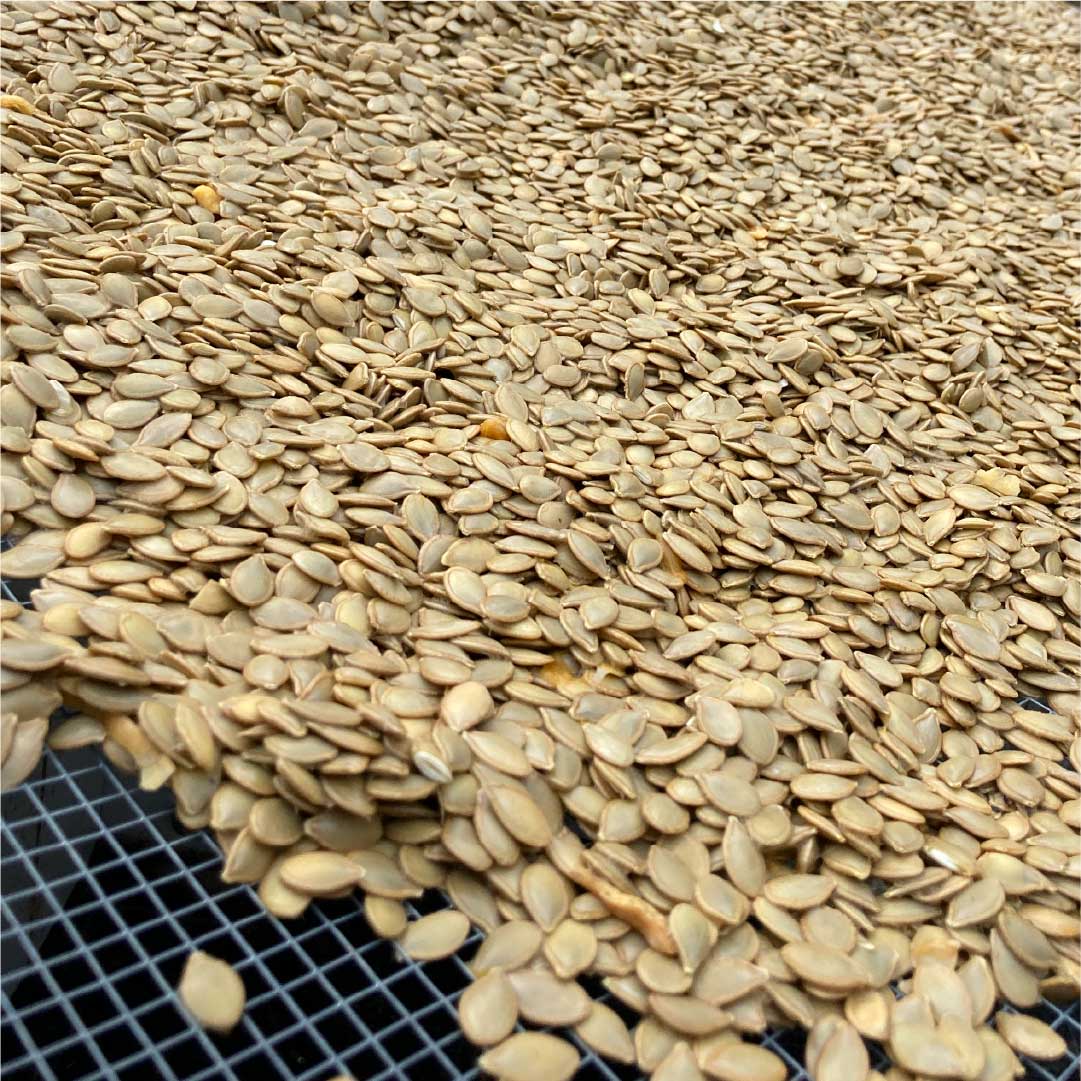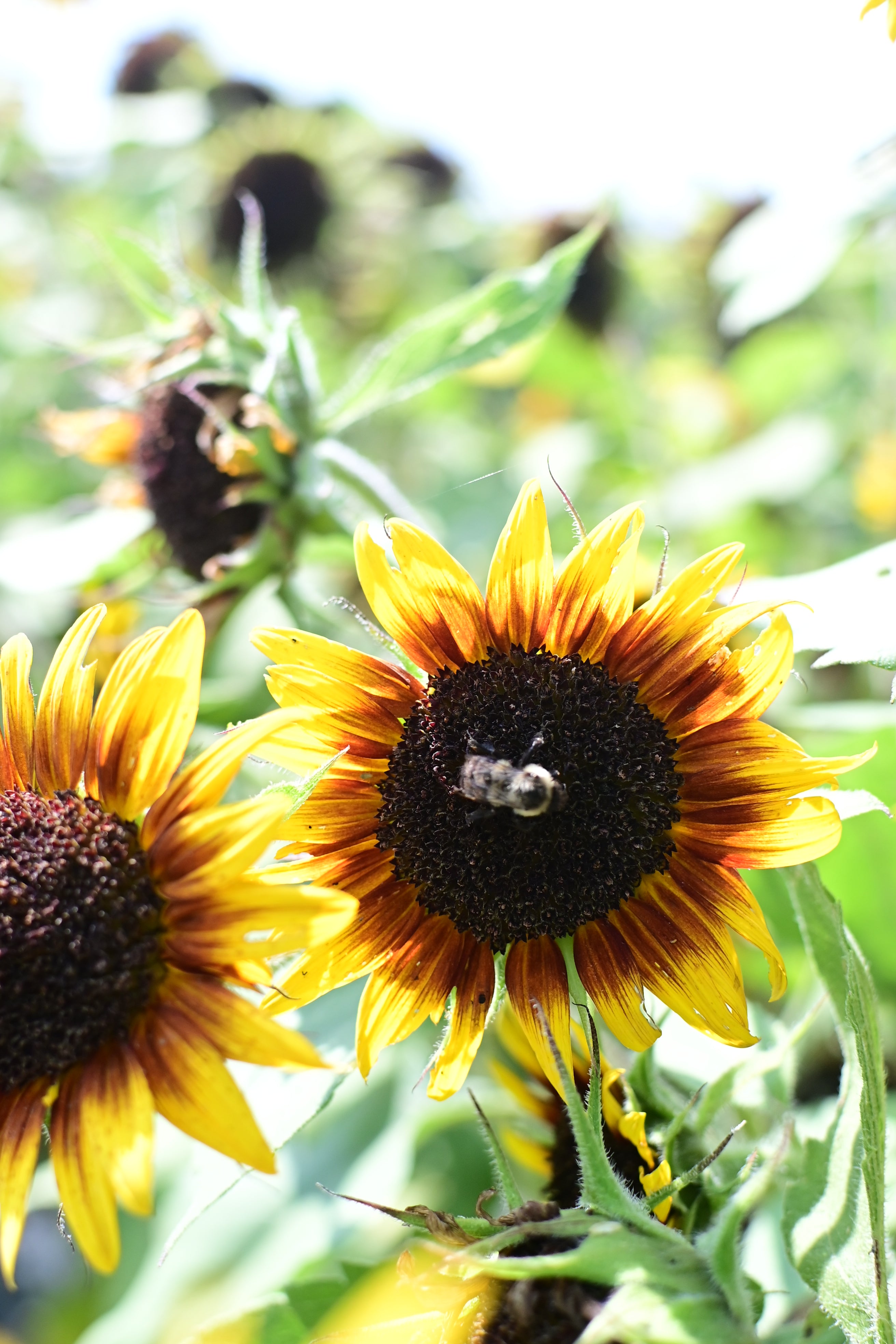
Driftless Seed Supply Grower Resources
Sunflower Growing Resources
Introduction to Sunflower
Historical and Botanical Overview
- Taxonomy: Sunflower (Helianthus annuus L.) is part of the Asteraceae family, native to the Americas.
- Varieties: Includes single-headed varieties for seed production and branched varieties for cut flowers.
Cultural Practices
Seed Selection and Planting
- For Seed Production: Choose high-oil varieties for commercial seed and oil production.
- For Cut Flowers: Opt for varieties with long stems and vibrant colors.
For Sunflowers Grown for Cut Flowers:
- In-Row Spacing:
- For single-stem varieties (producing one large flower per plant), space plants about 6 to 9 inches apart.
- For branching varieties (producing multiple flowers per plant), allow 12 to 24 inches between plants, depending on the variety's growth habit.
- Between-Row Spacing:
- A spacing of 24 to 36 inches between rows is typical for cut flower production.
Wider row spacing facilitates easier access for cutting and maintenance.
For Oilseed Sunflowers:
- In-Row Spacing:
- Typically, oilseed varieties are planted with an in-row spacing of about 6 to 10 inches. This close spacing is used to encourage taller growth and smaller heads, which is ideal for mechanical harvesting.
- Between-Row Spacing:
- The between-row spacing for oilseed sunflowers usually ranges from 20 to 30 inches.
- Wider row spacing can be used to accommodate equipment and to allow for better air circulation, which can help reduce disease pressure.
For Non-Oilseed (Confectionary) Sunflowers:
- In-Row Spacing:
- Non-oilseed sunflowers, which are grown for their larger seeds, generally require more space. An in-row spacing of 8 to 12 inches is common.
- This spacing allows for larger head development, which is desirable for seed production.
- Between-Row Spacing:
- Similar to oilseed sunflowers, a between-row spacing of 20 to 30 inches is typical.
Additional Considerations:
- Soil Fertility and Type: Richer soils can support closer spacing, while in less fertile soils, wider spacing might be necessary.
- Irrigation System: Drip irrigation systems might allow for closer spacing compared to overhead systems.
- Climate and Sunlight: In regions with high humidity and less intense sunlight, wider spacing can help improve air circulation and sun exposure to the plants.
It's important to adjust these recommendations based on the specific variety of sunflower you are growing and the conditions of your farm.
Soil and Fertilizer Requirements
- Soil Type: Well-drained, fertile soils are preferred.
- Fertilization: Sunflowers require adequate nitrogen, phosphorus, and potassium. Soil tests are recommended to determine specific needs.
Water and Irrigation Needs
- Sunflowers have extensive root systems, making them drought tolerant.
- Critical periods for irrigation are 20 days before and after flowering.
Pest Management
Insect Pests
- Major Pests: Includes the sunflower moth and the carrot beetle.
- Control Measures: Use approved insecticides and monitor fields regularly for infestations.
Diseases and Prevention
- Common Diseases: Include downy mildew, rust, and Verticillium wilt.
- Preventive Measures: Implement crop rotation, use disease-free seeds, and ensure good air circulation.
Bird Predation of Seeds
Bird predation can be a significant issue when growing sunflowers, especially as the seeds begin to mature and become an attractive food source for birds. Here are some strategies to help reduce or prevent bird damage:
Netting:
Covering sunflower heads with netting is one of the most effective methods. The net should be fine enough to prevent birds from accessing the seeds and should be placed over the heads as they begin to mature.
Scare Tactics:
- Visual Deterrents: Use reflective tape, aluminum pie pans, or commercially available bird-scare balloons around the field. These objects move with the wind and reflect light, which can scare birds away.
- Scarecrows: Traditional scarecrows or more modern, automated versions can help deter birds. These need to be moved regularly to maintain their effectiveness.
- Predator Decoys: Models of predatory birds, like hawks or owls, can be effective. Like scarecrows, these should be moved regularly to prevent birds from becoming accustomed to them.
Auditory Deterrents:
- Use noise-making devices like propane cannons, electronic bird calls, or ultrasonic devices. The key is to vary the sounds and intervals to prevent birds from becoming accustomed to them.
- Some farmers use radios or other sound systems to create a human presence, which can also be effective.
Tactile Repellents:
- Applying sticky substances on areas where birds perch can discourage them from landing. However, this method is more practical for smaller or more contained areas.
Timing of Planting and Harvest:
- Adjusting the timing of planting and harvesting can sometimes help avoid peak bird activity periods.
Diverse Planting:
- Planting a variety of crops can sometimes reduce the concentration of birds in any one area. This is more of an indirect method and may not be highly effective for large sunflower fields.
Field Location:
If possible, avoid planting sunflowers near wooded areas or water sources where birds are more likely to congregate.
Collaborative Scaring:
- Working with neighboring farms to implement bird scaring tactics can be more effective than individual efforts, especially for large-scale operations.
Harvesting and Storage
Harvesting Techniques
- For Seed Production: Harvest when seeds are fully ripened, usually indicated by the back of the head turning yellow-brown.
- For Cut Flowers: Harvest when the petals around the head just begin to open.
Post-Harvest Handling
- For Seeds: Dry seeds to about 10% moisture content for storage.
- For Cut Flowers: Place immediately in water and keep in a cool environment to maintain freshness.
Special Considerations for Different Types of Sunflowers
Single-Headed/Single-Stemmed Sunflowers
- Ideal for Seed Production: These varieties focus their energy on one large head, producing a high yield of seeds.
- Growing Conditions: Require wider spacing to allow for large head development.
Branched Sunflowers
- Ideal for Cut Flowers: Produce multiple stems and flowers per plant.
- Harvesting: Can provide a continuous harvest as different stems mature at different times.
Conclusion
Sunflower cultivation can be a rewarding endeavor, whether for seed production, kitchen bouquets, or for the floral market. Understanding the specific needs of the variety you choose, whether it's for large seed heads or for bountiful blooms, is crucial for a successful harvest. Regular monitoring for pests and diseases, appropriate watering, and timely harvesting are key to maximizing yield and quality.

